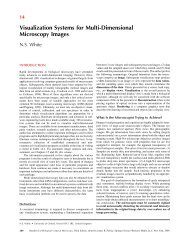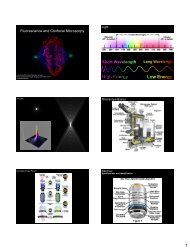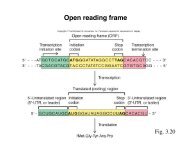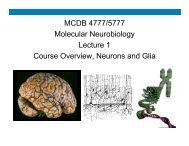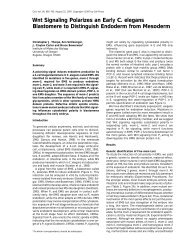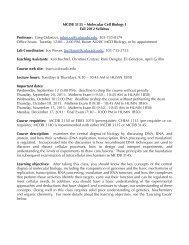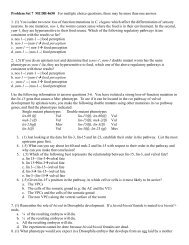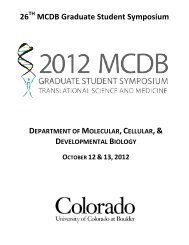Lecture 3: A Brief Overview of Molecular Phylogeny - MCD Biology
Lecture 3: A Brief Overview of Molecular Phylogeny - MCD Biology
Lecture 3: A Brief Overview of Molecular Phylogeny - MCD Biology
Create successful ePaper yourself
Turn your PDF publications into a flip-book with our unique Google optimized e-Paper software.
6<br />
4. In the case <strong>of</strong> rRNAs, the high degree <strong>of</strong> conservation makes the secondary structures important alignment<br />
tools – (see secondary structures <strong>of</strong> rRNAs-available on Class Website).<br />
a. Paired regions in the SSU rRNAs are not conjecture based on the occurrence <strong>of</strong> complements, but are<br />
“proven” by covariations in the sequence set that maintain the complementarity.<br />
3. Calculation <strong>of</strong> trees: there are many ways to do this. As discussed in the Workshop, popular methods include<br />
trees based on:<br />
• Evolutionary distance<br />
• Maximum parsimony<br />
• Maximum likelihood<br />
A. In each case, a computer-search is used to find “the tree” most consistent with the data set.<br />
B. All the methods rely heavily on statistical analysis. One consideration in these calculations or any “discrete<br />
number” assessments is “Poisson statistics.” (Biologists need to know about Poisson statistics.)





